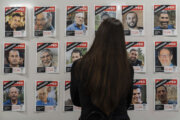Last weekend in Los Angeles, 370 of the best American marathon runners competed for a few key slots on the U.S. Olympic team. (Only 256 finished the race.) As a runner who watched the event, I could have simply taken in the spectacle and enjoyed the excitement. But, I learned from the experience as well. Here’s what these phenomenal runners taught me — and what you can learn from them too:
1. Fatigue happens.
Most marathon runners worry that they’ll run out of gas somewhere in the late miles. This fear is warranted, as it happens to most of us at some point. After all, the marathon is a long race in many ways: physically, mentally and geographically. But many runners don’t realize that even the sport’s best participants face this challenge.
Sure, top runners make it look easy in some respects, but they also put in a massive amount of training to prepare. On top of that, many of them are supported by trainers, coaches, nutritionists and therapists. And they’re built — physically speaking — with bodies made for running. Still, as I saw last weekend, even top runners fade dramatically late in the race.
What can you learn from this? Don’t beat yourself up when the pressure and fatigue piles on late in the race. That’s just the way it feels — even for the very best.
2. Have a plan — and run with it.
One of the fundamental elements of marathon training is having a plan and executing it. For most of us, that means setting a realistic goal pace, practicing that pace over and over, and running that pace on race day.
At the trials, Shalane Flanagan and Amy Cragg did just that. The two women competitors ran together at the front of the race, step for step, leaving behind their rivals early on. They had practiced their pace and committed to running it, even if the rest of the field didn’t go with them. That can be an uncomfortable feeling, but Flanagan and Cragg had faith in their race plan and stuck to it. With Cragg finishing in first place and Flanagan taking third, both women made the Olympic team.
The lesson? We generally have a tight pacing window of about 20 seconds per mile faster or slower than our practiced pace. Cragg and Flanagan knew that slowing down below their race pace was just as risky as going too fast. On race day, we need to stay within the window that we’ve practiced — or the wheels are destined to come off in the final miles.
3. Know your teammates.
Flanagan and Cragg had trained together and planned to run side by side. Early on, they stuck to their plan. But late in the race, Flanagan began to fade. Cragg helped her out by talking to her, staying by her side and willing her on as fatigue and heat set in. It was obvious that, at some point, Cragg would have to leave Flanagan behind in order to stay on task and win the race, but Cragg was there for her teammate in her time of need. Had she not been, Flanagan may not have made the Olympic team.
In the men’s race, on the other hand, Meb Keflezighi and Galen Rupp mixed it up in a different way. The two hadn’t trained together and they didn’t have the same team spirit as the women. Keflezighi, one of America’s most experienced runners, reportedly said, “It’s not a track; the road is open.” In other words: “Give me some space.” Rupp ended up finishing first, about one minute before Keflezighi, who came in second.
We can learn two things from these scenarios. First, there is great power in working with a training partner and bringing that experience to race day. Second, don’t forget that you are, in fact, racing. If you haven’t established that bond, some competitors may not welcome you by their sides.
4. Take heat into account.
Marathon runners the world over should learn and relearn that heat is our archenemy. There are no two ways around it: When the temperature rises — just as when the incline rises — the effort level goes up to maintain the same pace.
Going into the race in Los Angeles, we knew the temperature was going to rise above 80 degrees. And, as always, we knew this would slow the finishing times. In turn, much of the field proactively slowed down earlier in the race to deal with the heat. Those who didn’t, Flanagan included, lost traction in the closing miles when the temperature really cranked up.
The key learning here is that when we go into a race, we need to modify our plans according to the temperature. When high heat is on the menu, for instance, we need to back off the pace to keep the effort level similar to our training. This is especially true when you have been training in the cold.
The marathon trials offered up some great racing and some great lessons. I’ll be looking forward to seeing more great racing at the Olympic Games.
More from U.S. News
8 Reasons Running Now Will Help You Later in Life
10 Themed Races to Make Getting In Shape Fun
12 Psychological Tricks to Get You Through a Workout or Race
4 Lessons From Olympic Marathon Hopefuls Any Runner Can Use originally appeared on usnews.com







